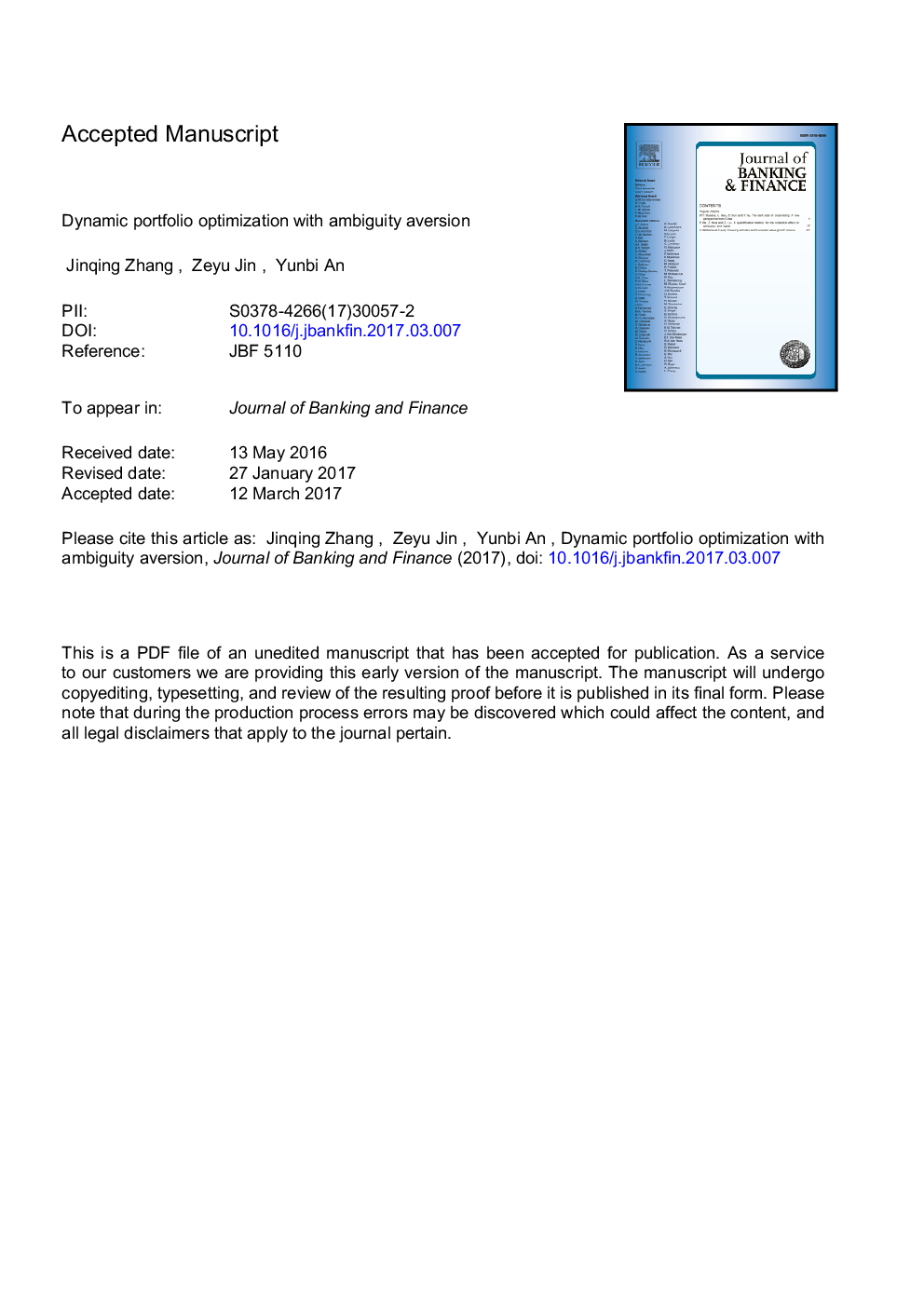| Article ID | Journal | Published Year | Pages | File Type |
|---|---|---|---|---|
| 5088145 | Journal of Banking & Finance | 2017 | 56 Pages |
Abstract
This paper investigates portfolio selection in the presence of transaction costs and ambiguity about return predictability. By distinguishing between ambiguity aversion to returns and to return predictors, we derive the optimal dynamic trading rule in closed form within the framework of Gârleanu and Pedersen (2013), using the robust optimization method. We characterize its properties and the unique mechanism through which ambiguity aversion impacts the optimal robust strategy. In addition to the two trading principles documented in Gârleanu and Pedersen (2013), our model further implies that the robust strategy aims to reduce the expected loss arising from estimation errors. Ambiguity-averse investors trade toward an aim portfolio that gives less weight to highly volatile return-predicting factors, and loads less on the securities that have large and costly positions in the existing portfolio. Using data on various commodity futures, we show that the robust strategy outperforms the corresponding non-robust strategy in out-of-sample tests.
Related Topics
Social Sciences and Humanities
Economics, Econometrics and Finance
Economics and Econometrics
Authors
Jinqing Zhang, Zeyu Jin, Yunbi An,
